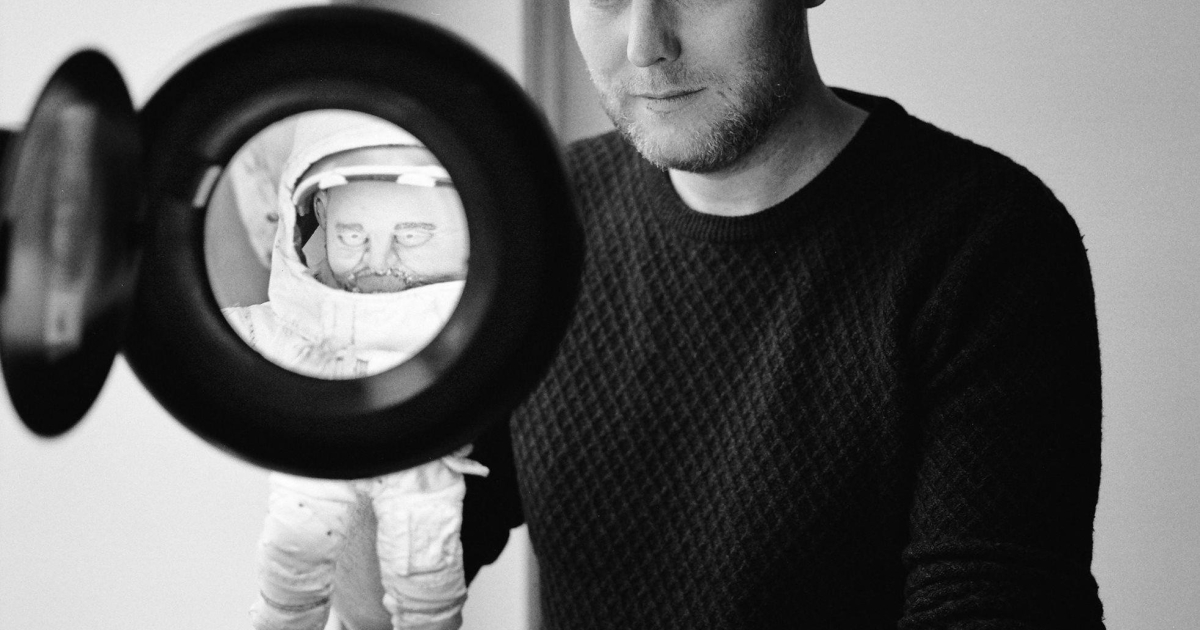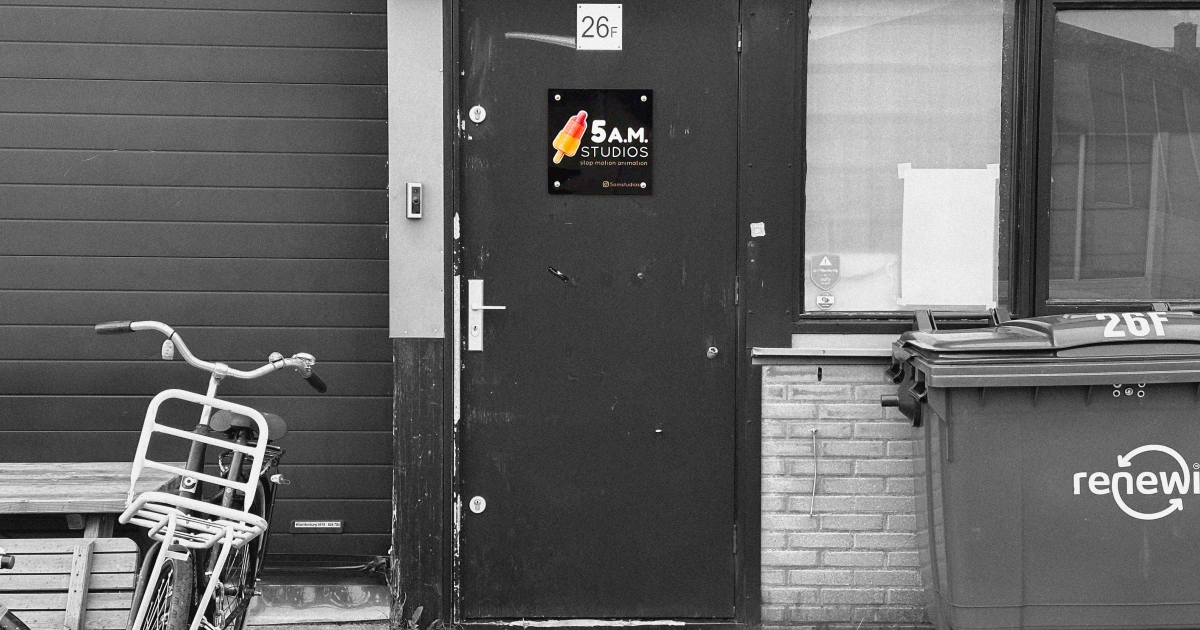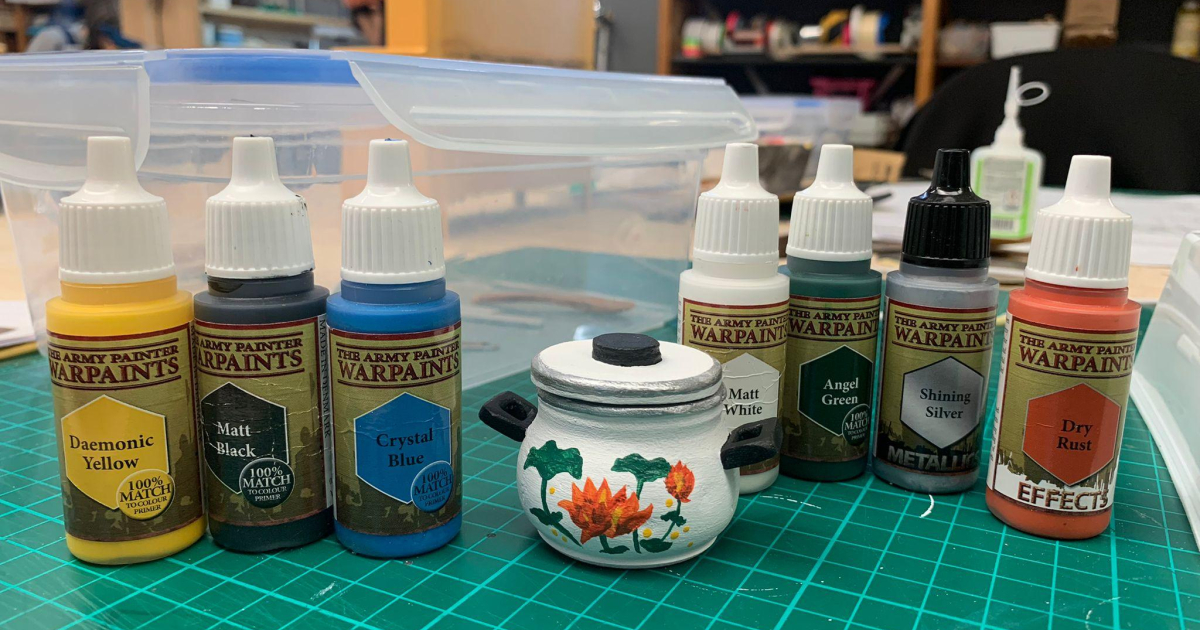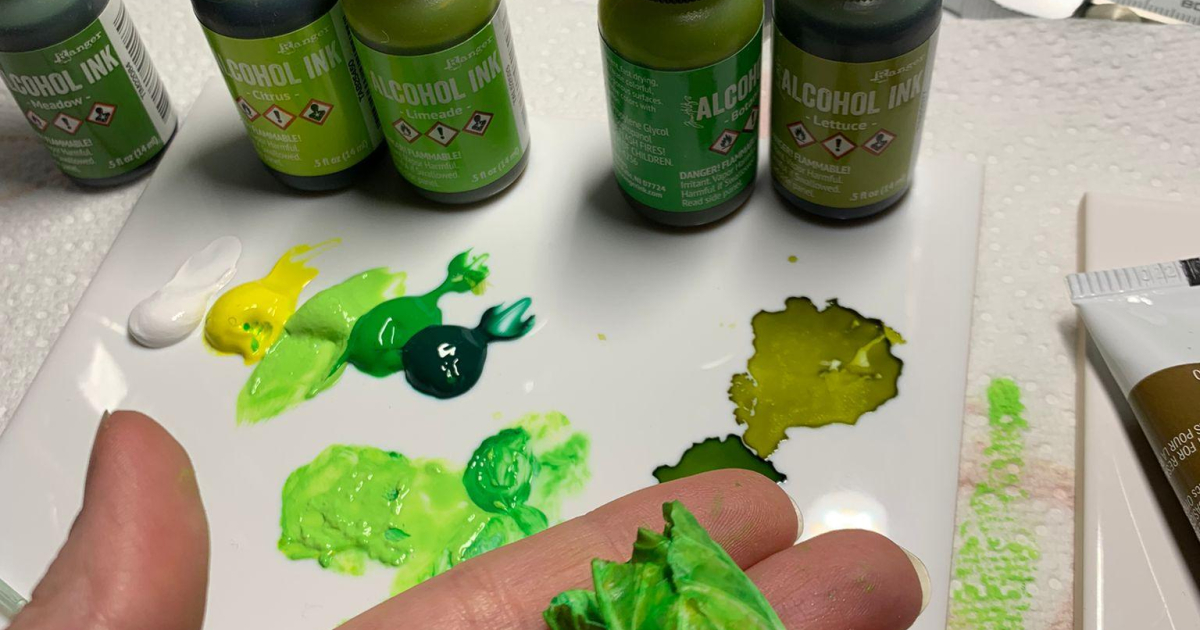Spotlight x Studio Visits w/ 5am Studios

What is really exciting at the moment is the crossover between all types of animation.
3D elements in hand-built sets. 2D elements in stop-motion. Animation in live action. Completely mixed everything productions where there's 3D, stop frame, model-making, and 2D elements - It is an exciting time for story telling.
- Jeroen Zijlstra
A chameleon flickers in his plasticine kingdom. A leather-clad youth navigates inner-city streets, weaving through trash cans and scattered Chinese takeaway boxes. In a quaint kitchenette, complete with sizzling pans and bubbled-over pots, a wide-eyed woman stares aghast as an ever-expanding wall of boiled rice threatens to engulf her home and neighborhood. These are some of the characters, sets, scenes, and worlds made possible by Amsterdam-based one-stop-stop-motion-shop 5 A.M. Studios.
Nestled unassumingly in Amsterdam’s North, the studio boasts more possibilities than its square meterage seems to allow. Multiple studio setups, 3D scanning & printing, mold making, set building, editing suites, script development, character design, prop, and puppet making - it's all here. The seamless fusion of traditional craft, cutting-edge technology, and in-house ingenuity birthing a true playground where any idea finds life.
We cycle over for a sneak peek and a chat with the talented team behind the Raket Rocket door. Gesturing animatedly (pun absolutely intended), Studio Founder Jeroen Zijlstra introduces us to everything 5 A.M, the studios' exciting new opportunities, and why the power of stop motion animation is as strong as ever.




Amid the sleek CGI era, you might expect the vintage allure of stop-motion and puppetry to wane. Yet, it's quite the opposite. Audiences hunger for it. Think Guillermo Del Toro's 2022 stop-motion "Pinocchio.” The touch of human hands, dormant objects awakening, textures, quirks, and blemishes—all seem to spark our wildest imaginings.
ADCN: Jeroen, what is it about stop motion that draws people in? What is its unique power?
Jeroen: The power of stop motion is definitely in its tangibility. It’s real. For many people, it’s nostalgia. It reminds them of their childhood and playing with their toys. For us as a studio it’s working with our hands, getting out of the computer. Going back into the computer - combining things. Bringing inanimate objects to life is the most fun way to animate.
But, I do think there is also a general increasing desire for “real,” a desire for “tangible” that is driven by the overload of today’s sped-up digital world. You see it in the return of analog and current fashion trends. You even see it in Hollywood Directors actively shying away from CGI in favor of practical effects. With stop motion animation you see the blemishes, you see the human, and you feel the time spent. That is its power.
From a commercial standpoint, it is a highly effective tool to engage with and create an emotional connection with your audience. Our BTS footage and on-set time-lapse videos for example are some of the most watched media on our socials.
ADCN: What aspect of the industry excites you the most today?
Jeroen: I think what is really exciting at the moment is the crossover between all kinds of animation. 3D elements in hand-built sets. 2D elements in stop motion. Animation in live action. Completely mixed everything productions where there's 3D, stop frame, model making, and 2D - It’s a really exciting time for storytelling.
The biggest challenge we have as a studio is to stay new, to stay fresh. It means we have to develop with our craft. At 5 A.M. Studios we adapt modern techniques like 3D scanning, laser cutting, and 3D printing - a lot of 3D printing - and we try to combine them and insert them as tools in our craft. Next to that, we venture into virtual production. We use a lot of digital backdrops in our stop-frame animations. This has allowed us more flexibility in production, to speed up processes and reduce costs.
There is this idea - especially in commercial settings - that stop motion, because it’s handmade, is per definition, more costly than 3D animation, for example. But that doesn’t have to be the case. New craft and digital innovations continue to speed up processes and cut budget costs. Very good 3D animation can often be more expensive than stop motion animation.

ADCN: So, what would you say to potential clients unsure whether stop motion is the right fit for their campaign?
Jeroen: Stop motion actually has far more in common with film than it does with other animation processes. So, like film, there are pretty big key moments where decisions need to be fixed for a project to go further. It means, changing ideas later in the production will be more costly. But it’s just a different style of approach and a lot of issues can be avoided. As a studio, we have written some guides that we share with clients to streamline the processes and help take financial fear away from them.
There is a project solution for everyone. We can animate and build things from very simple to very high-end. And If it’s too complex a project to pick up in stop-frame animation we will say that to the client and advise them to go 3D - either with us or another studio.





ADCN: What recent work makes you the most proud?
Jeroen: That is for sure, “Saleeg” directed by Afnan Bawyan.This is the short film we built and animated last year. We were excited to be a part of this project for a lot of reasons, since public cinemas were banned in Saudi Arabia in 1983 and just reopened in 2018, the industry there is booming. ‘Saleeg’ is the first ever stop motion to come out of Saudi and also the first ever all-female produced Saudi film. They don’t yet have stop motion production houses so we were more than happy to jump in to help. The entire production was directed remotely, with the producers and directors working from Saudi Arabia while we animated in Amsterdam.
I'm extremely proud of the fact that we could make a 10-minute short film with 27 people working on it, 220 camera settings for 190 shots total. And we shot it in a little bit under three months. The entire project was a little bit under eight months from the first sketch to the final render, which with six characters and 20 sets is insane.
‘Saleeg’ is currently making the rounds at this year's animation competitions and festivals and we are so excited for people to see it.
Commercially, is there a recent wish-I-woulda campaign for you out there?
Jeroen: A recent example for me would be, one of the latest campaigns made by Buck in Amsterdam and New York. It is an ad for Lily's Gummy Bears. It is a very bright, and colorful 3D and paper animation with floating happy gummy bears inside. The way it looks and the way it feels - you can almost taste it. It's very bright with a great paper-feel.
This work to me is stunning. I definitely wanted to have made that.
What's next up for 5 A.M. Studios?
Jeroen: We are now in talks to open up shop on the other side of the world to do a development for a series of films and shorts in Canada. And I am flying to LA in November to pitch for Disney.
Even to my ears, that sounds ridiculous.
It is unbelievably exciting.